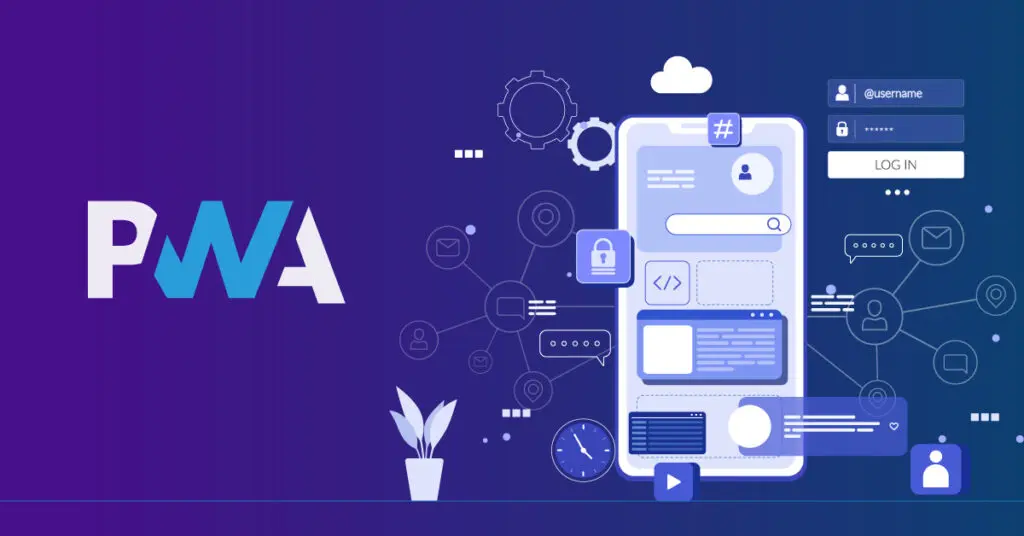Progressive Web Apps (PWAs) – Blurring the Line Between Web and Mobile Applications

In this article, we will explore what PWAs are, how they work, their key benefits, and why they are essential for modern businesses. If you’re looking to dive deeper into the latest tech trends, check out our blog at Brobotx Blog.
What Are Progressive Web Apps (PWAs)?
A Progressive Web App (PWA) is a type of web application that leverages modern web technologies to deliver an app-like experience to users. Unlike traditional mobile applications that require downloads from app stores, PWAs are accessible directly through a web browser, providing a smooth and engaging experience.
PWAs utilize features such as service workers, web app manifests, and responsive design to function across all devices, including desktops, tablets, and smartphones. They are designed to work reliably in different network conditions, ensuring users can access content even when offline.
For more insightful tech articles, visit our blog at Brobotx Blog.
Key Features of PWAs
PWAs come with several distinguishing features that make them superior to traditional websites and mobile applications:
1. Fast Loading Speeds
PWAs leverage caching mechanisms through service workers, ensuring instant loading times and smooth navigation, even in areas with poor internet connectivity.
2. Offline Functionality
Service workers enable PWAs to work offline by storing relevant resources in the cache. This ensures users can access content without an active internet connection, making PWAs more reliable than traditional web applications.
3. App-Like Experience
PWAs are designed to look and feel like native apps, complete with smooth animations, gestures, and push notifications. They can also be added to the home screen, eliminating the need for app store installations.
4. Responsive Design
These applications seamlessly adapt to various screen sizes and devices, ensuring a consistent experience across desktops, tablets, and mobile phones.
5. Secure & HTTPS-Enabled
Security is a major concern for web applications. PWAs run on HTTPS, ensuring data encryption and preventing unauthorized access.
6. Push Notifications for User Engagement
One of the strongest features of PWAs is their ability to send push notifications, allowing businesses to keep users engaged and informed.
To stay updated on the latest technology trends, check out our blog at Brobotx Blog.
Benefits of PWAs for Businesses
Businesses that adopt PWAs can experience several advantages, from improved customer retention to cost savings. Here’s why you should consider integrating a PWA for your business:
1. Improved Performance & Engagement
PWAs load faster and provide a smoother user experience, reducing bounce rates and increasing engagement.
2. Lower Development Costs
Since PWAs work across all devices, businesses don’t need to develop separate applications for iOS and Android, saving both time and money.
3. Enhanced User Retention
PWAs allow users to add the app to their home screens without needing an app store download, resulting in higher retention rates.
4. Better SEO & Discoverability
Unlike native apps, PWAs are indexed by search engines, making them more discoverable to potential users.
5. Reduced Dependency on App Stores
By bypassing app store approvals and commissions, businesses have more control over their applications and revenue streams.
Explore more tech-related insights at Brobotx Blog.
How PWAs Work
To understand how PWAs function, let’s break down the three core components:
1. Service Workers
Service workers act as background scripts that manage caching and offline functionality, ensuring faster loading and seamless performance.
2. Web App Manifest
A JSON file that defines the PWA’s metadata, including the app’s name, icon, theme color, and display mode.
3. HTTPS for Security
PWAs must be served over HTTPS to ensure a secure and safe browsing experience for users.
For in-depth technical insights, read our latest posts at Brobotx Blog.
Successful Brands Using PWAs
Several major companies have adopted PWAs to enhance their digital presence and user experience:
-
Twitter Lite: Reduced data consumption by 70% while increasing user engagement.
-
Pinterest: Achieved a 60% increase in user engagement with its PWA.
-
Starbucks: Enabled offline ordering and improved customer experience.
-
Uber: Created a lightweight PWA that runs efficiently on low-end devices.
Discover more case studies on innovative technologies at Brobotx Blog.
How to Build a PWA for Your Business
If you’re considering developing a PWA, follow these essential steps:
1. Plan Your PWA Strategy
Define the key functionalities and user experience goals for your PWA.
2. Implement Service Workers
Use service workers to enable caching and offline support for your application.
3. Create a Web App Manifest
Define essential app details, such as name, icons, and display preferences.
4. Optimize Performance
Ensure fast loading speeds by optimizing images, scripts, and overall application structure.
5. Test and Deploy
Conduct rigorous testing across different devices and browsers before deployment.
Need expert guidance? Visit Brobotx Blog for detailed tutorials and tech insights.
Conclusion
Progressive Web Apps are revolutionizing the way businesses engage with users by offering a seamless, high-performance experience that combines the best of web and mobile applications. With benefits like offline functionality, push notifications, and faster loading speeds, PWAs are the future of web development.
If you’re looking to stay ahead in the digital world, consider implementing a PWA for your business. For more articles on emerging technology trends, visit Brobotx Blog and stay informed.